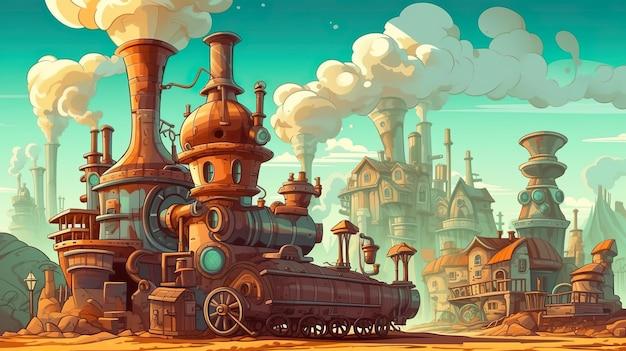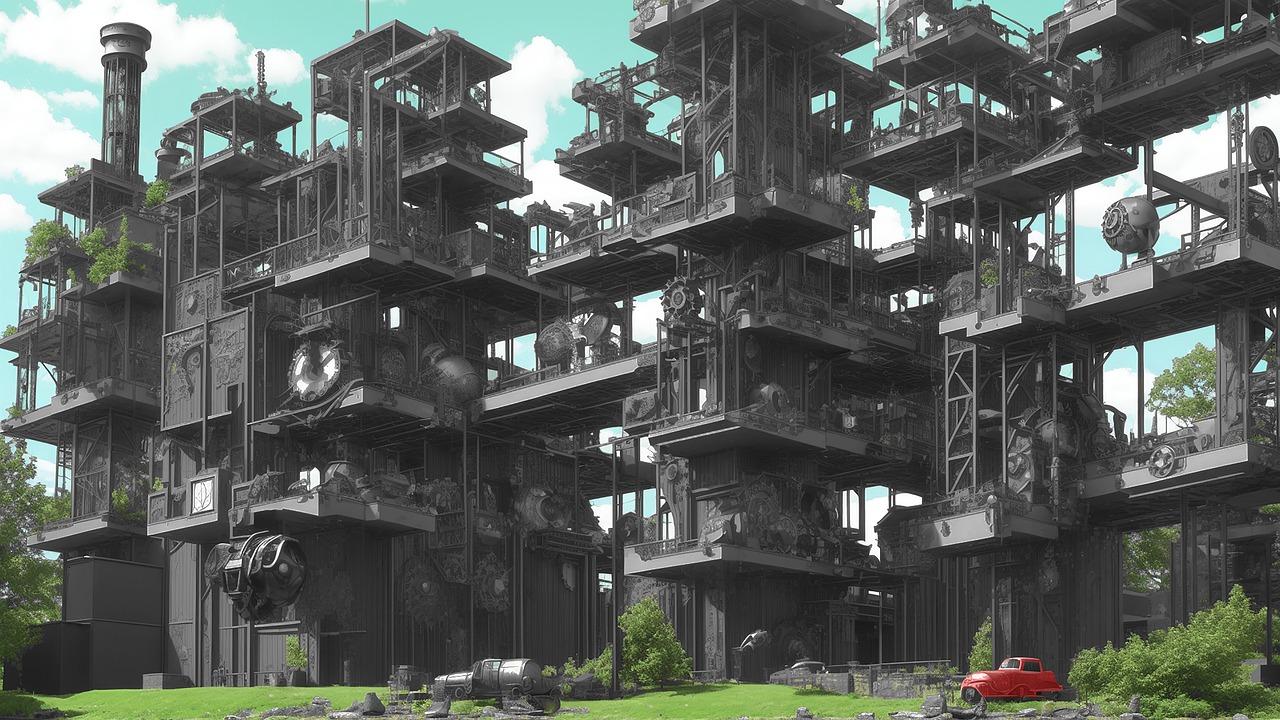The Industrial Revolution, which began in the late 18th century, propelled significant advancements in technology, manufacturing, and societal development. It revolutionized the way goods were produced, trade was conducted, and communities were shaped. Although often criticized for its negative consequences, such as environmental degradation and poor working conditions, it’s important to acknowledge the positive impacts this revolutionary period had on our world.
In this blog post, we will explore the positive effects of the Industrial Revolution, shedding light on its role in economic development and the remarkable changes it brought to people’s lives. We’ll delve into the improvements in productivity, the rise of factory work, and how industrialization shaped the world we know today. So, grab a cup of coffee and join us as we journey back to the times when steam engines roared and innovation sparked a new era of progress.

Positive Effects of the Industrial Revolution
Economic Growth: From Rags to Riches
The Industrial Revolution in America brought about a wave of economic growth that transformed the nation from a simple agrarian society to an industrial powerhouse. With the introduction of new technologies and manufacturing processes, industries experienced unprecedented advancements, leading to increased production and trade. America’s economic landscape flourished, creating more job opportunities and boosting the overall standard of living for its citizens.
Technological Marvels: Waves of Wonder
One of the greatest positive effects of the Industrial Revolution was the abundance of technological marvels that emerged during this period. Innovations such as the steam engine, mechanized agriculture, and the telegraph revolutionized different aspects of life. Suddenly, communication became faster, transportation more efficient, and production methods more streamlined. The world was left in awe as these inventions paved the way for even more remarkable discoveries that would shape the future.
Steam Engines: Igniting Progress
The birth of steam engines wasn’t just a game-changer; it was a world changer. These powerful contraptions played a vital role in powering factories, locomotives, and ships, opening up new possibilities for transportation and industrial expansion. They were the burning heart of progress, fuelling the machinery that drove the Industrial Revolution forward.
Urbanization: Cities Bursting with Life
As industries flourished, the face of America began to transform with an explosion in urbanization. Cities grew rapidly, attracting people from rural areas seeking employment. This migration led to the development of bustling metropolises, complete with towering skyscrapers, bustling markets, and vibrant cultural scenes. The industrialized cities became hubs of energy and dynamism, drawing in dreamers and workers alike, all yearning for a taste of the industrial-era excitement.
Improved Standard of Living: Paving the Way for Progress
The Industrial Revolution brought about significant improvements in the standard of living for many Americans. As industrialization prospered, the cost of goods decreased, making them more accessible to the general population. People gained access to previously scarce and expensive items, such as clothing and household products, which were now being mass-produced. The increased availability and affordability of goods allowed people to enjoy a higher quality of life, marking a significant shift in societal norms.
Progress in Medicine: Remedies for Renaissance
Advancements in medical science also propelled forward during the Industrial Revolution. As urbanization led to overcrowded cities and increased health risks, medical professionals were compelled to search for solutions. This urgency sparked the development of new medical practices, better sanitation systems, and the discovery of life-saving vaccines. The Industrial Revolution laid the groundwork for modern medicine, transforming it into the illustrious field we know today.
The positive effects of the Industrial Revolution in America cannot be overstated. From economic growth and technological marvels to urbanization and improved living standards, this era left an indelible mark on history. The world was forever changed by the remarkable inventions and advancements that characterized this period. As we reflect on the past, let us appreciate the tremendous impact and enduring legacy of the Industrial Revolution that continues to shape our lives to this day.

Industrial Revolution FAQ: Exploring the Positive Effects
What are some of the positive effects of the Industrial Revolution
The Industrial Revolution had a profound impact on society, bringing about numerous positive changes. Here are some of the key effects that transformed the world as we know it today:
Economic Boom and Job Creation
One of the major advantages of the Industrial Revolution was the significant economic growth it brought. The introduction of mechanized production methods boosted productivity and led to a surge in manufacturing, trade, and commerce. As a result, new job opportunities arose, attracting people from rural areas to urban centers in search of employment. From factory workers to skilled technicians, the demand for labor increased, creating a robust workforce and ultimately driving national economies forward.
Technological Advancements
The Industrial Revolution paved the way for groundbreaking innovations that revolutionized multiple industries. From the invention of the steam engine to the development of new machinery and tools, technological advancements soared to new heights. These breakthroughs not only improved productivity but also sparked further scientific discoveries and innovations across various fields. The constant pursuit of efficiency and progress during this time had a lasting positive impact on society, spanning from transportation and communication to medicine and agriculture.
Improved Living Standards
As industrialization took hold, living standards for many people improved significantly. With increased production and access to goods, consumer availability skyrocketed, making previously scarce or expensive items more affordable to the masses. The expansion of the middle class and the rise of a disposable income culture led to higher levels of comfort and convenience for ordinary people. New infrastructures, such as public transportation systems, sewage systems, and improved housing, emerged as cities adapted to accommodate the growing population. The Industrial Revolution, in essence, laid the foundation for the modern lifestyle we enjoy today.
What is the role of industrialization in economic development
Industrialization plays a crucial role in economic development by leading to increased productivity, higher living standards, and overall economic growth. Here’s how it works:
Boosting Productivity
Through the introduction of machinery and new production processes, industrialization improves efficiency and output levels. With more goods produced in less time, businesses can meet growing consumer demands, expand their markets, and generate a surplus that contributes to economic growth. As productivity increases, revenues rise, allowing companies to reinvest in further expansion and innovation.
Creating Employment Opportunities
Industrialization creates a multitude of job opportunities, catering to a diverse range of skills and expertise. From unskilled laborers to specialized technicians and engineers, various roles are required to drive the industrial sector forward. Moreover, the ripple effect of industrialization creates jobs in related industries, such as transportation, trade, and services, further stimulating economic development.
Attracting Investment and Fostering Innovation
The rapid growth and potential profitability of industrialized nations attract domestic and foreign investment, promoting economic development. This influx of capital fuels innovation and technological advancements, creating a cycle of continuous improvement. As companies compete to gain a competitive edge, they invest in research and development, leading to further breakthroughs and enhancing the overall economy.
What were the positive effects of factory work
While factory work during the Industrial Revolution had its drawbacks, it also brought about several positive effects:
Mass Production and Lower Costs
Factory work revolutionized production processes by introducing assembly lines, specialization, and mass production. This led to the efficient manufacturing of goods in large quantities, significantly reducing production costs. As a result, items that were previously deemed luxury goods became affordable and more accessible to the general population. Factory work played a pivotal role in shaping the consumer culture we know today.
Skill Development and Social Mobility
Factory work provided opportunities for individuals to acquire new skills and advance economically, especially for those who had limited options in rural areas. As workers gained experience, they developed specialized knowledge and expertise in operating machinery or performing specific tasks. This newfound skill set increased their economic value, enabling upward social mobility and better prospects for themselves and their families.
Improved Working Conditions and Rights
While there were significant challenges and hardships for factory workers during the early stages of industrialization, positive changes gradually emerged. As labor movements gained momentum, workers fought for better rights and improved working conditions. Through collective bargaining and legislative reforms, governments began implementing measures to protect workers and ensure safer workplaces. These advancements led to enhanced labor laws, shorter workdays, improved pay, and eventually the establishment of workers’ rights movements.
What is an example of industrialization
An excellent example of industrialization is the transformation of the textile industry in England during the early 18th century. Before this period, textile production primarily occurred through hand-based methods in people’s homes (a process known as cottage industry). However, advancements during the Industrial Revolution changed the game.
The invention of the spinning jenny by James Hargreaves and the spinning frame by Richard Arkwright revolutionized the textile industry. These mechanized devices allowed for large-scale thread and yarn production. Subsequently, the water frame and the spinning mule were invented, further enhancing the efficiency of textile manufacturing.
To accommodate the increased production, factories were established, concentrating the production process in one centralized location. This shift from cottage industry to factory-based production marked a significant milestone in the process of industrialization. Consequently, the textile industry witnessed exponential growth, becoming a leading sector in the industrial revolution and setting the stage for subsequent industrial advancements worldwide.
In conclusion, the Industrial Revolution brought forth numerous positive effects that shaped our modern world. Boosting economies, driving technological progress, improving living standards, and creating new opportunities, industrialization propelled societies forward. Despite its challenges, the transformative power of the Industrial Revolution cannot be underestimated, leaving an indelible mark on humanity’s path of progress.
